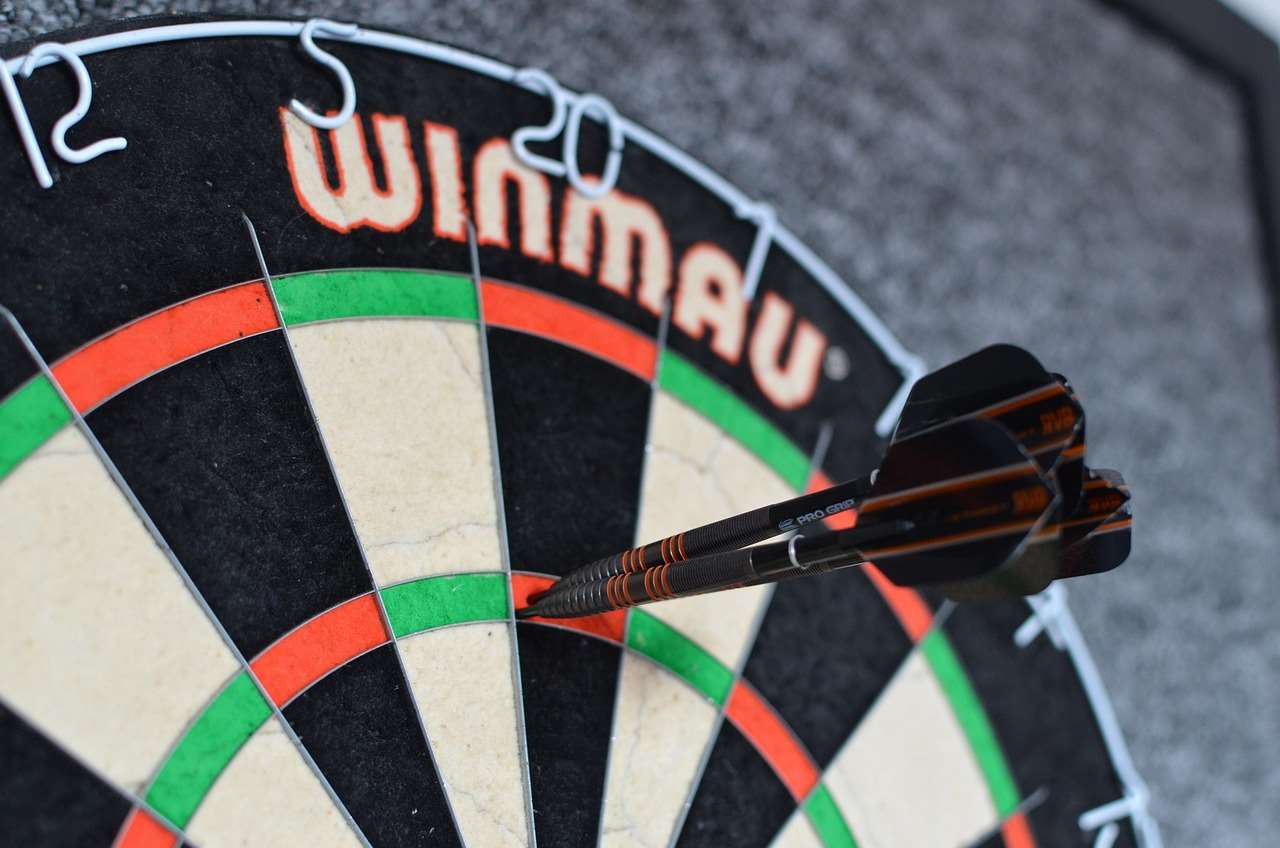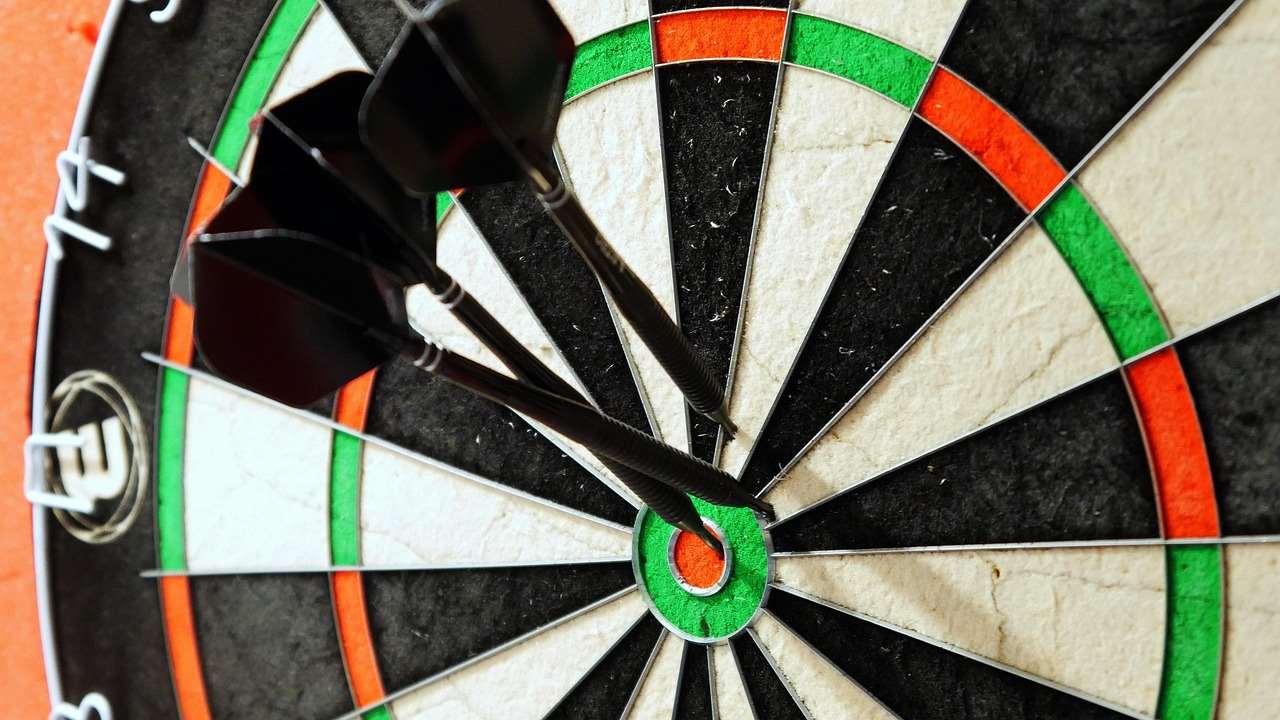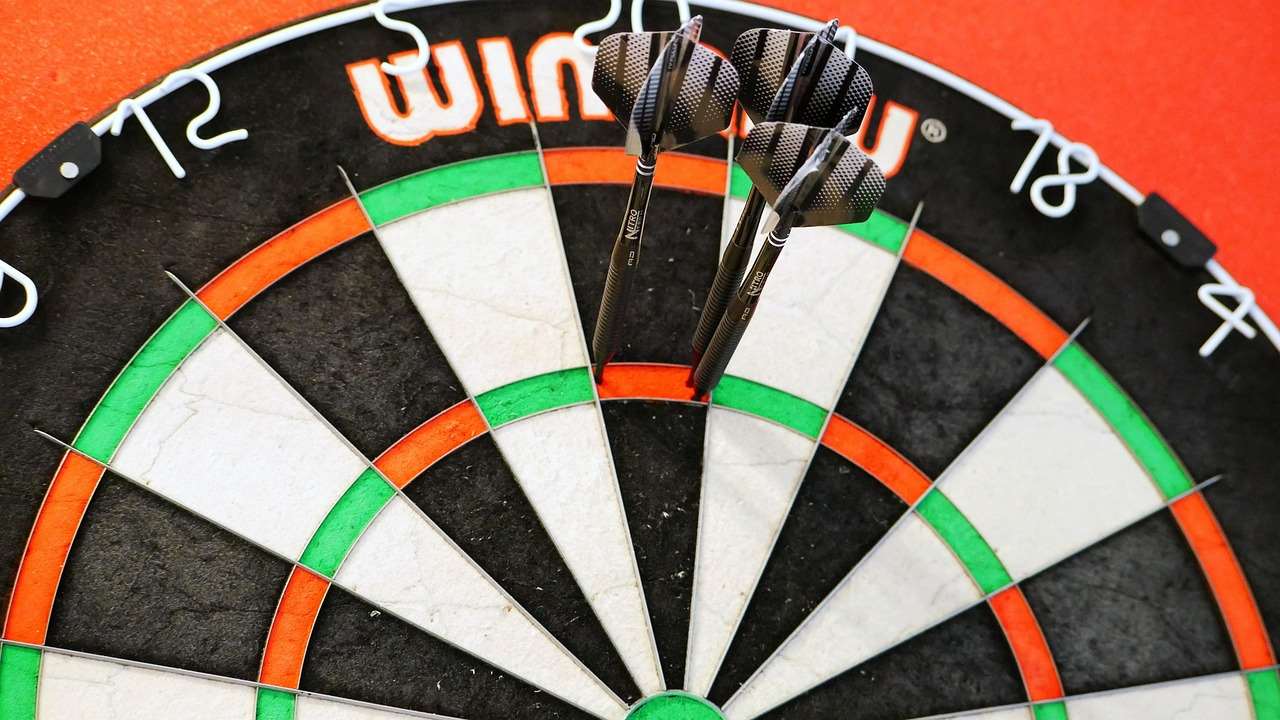The **treble in double out TIDO rules** in darts offer a challenging twist, requiring players to start a leg by hitting a treble and finish by hitting a double. This article will comprehensively explain the TIDO rules, strategies, variations, and how to implement them in your games.
⚠️ Still Using Pen & Paper (or a Chalkboard)?! ⚠️
Step into the future! The Dart Counter App handles all the scoring, suggests checkouts, and tracks your stats automatically. It's easier than you think!
Try the Smart Dart Counter App FREE!Ready for an upgrade? Click above!
Understanding Treble In Double Out TIDO Rules
The **treble in double out TIDO rules** significantly alter the standard darts format. The core difference lies in the starting and ending requirements for each leg. Instead of simply aiming to reduce your score to zero, players must now start with a treble (landing a dart in the thin outer ring, tripling the number of that segment) and end with a double (landing a dart in the thin inner ring, doubling the number of that segment).

This adds layers of complexity and strategy to the game. You can no longer just aim for the highest scores early on. You need to consider where your treble target will be and plan your strategy to leave yourself with a reachable double at the end of the leg. The **double out** rule itself adds a considerable amount of pressure to the game, as you must land on a double to win; otherwise, the round continues.
Key Components of TIDO
- Treble In: Starting a leg by hitting any treble on the board.
- Double Out: Finishing a leg by hitting any double on the board.
- Scoring: Normal scoring rules apply between the treble in and double out.
Implementing Treble In Double Out Rules
Implementing the **treble in double out TIDO rules** is straightforward. Simply inform all players before the game begins that the TIDO rule is in effect. The game then proceeds with the understanding that a treble must be hit to commence scoring, and a double must be hit to win. It’s recommended that you keep track of whether players have hit their treble to start scoring to avoid any confusion.
Adapting to the **TIDO format** requires adjustments to your usual throwing strategy. Players need to become more consistent with hitting trebles and doubles. Consider focusing on commonly targeted trebles, such as treble 20 or treble 19, and practice consistently to improve accuracy. You should also practice leaving yourself on manageable doubles, such as double 20 (40), double 16 (32), or double 8 (16).

Strategies for Mastering TIDO
Mastering the **treble in double out TIDO rules** requires a blend of skill and strategy. Here are some tips to elevate your game:
- Treble Selection: Choose a treble that you are consistently able to hit. Many players prefer the treble 20 or treble 19.
- Leaving a Double: Plan your shots strategically so that you leave yourself with a comfortable double to finish. Familiarize yourself with various double combinations.
- Mental Fortitude: TIDO can be mentally taxing. Stay calm and focused, especially when under pressure to hit a double.
- Practice Regularly: Consistent practice is key to improving your accuracy and confidence. Dedicate time to practicing trebles and doubles specifically.
The Added Challenge of Double Out
The **double out** component of the **treble in double out TIDO rules** presents a significant challenge. Even experienced players can struggle to consistently hit doubles under pressure. Effective strategies for improving your double out success include:
- Targeting Consistency: Focus on becoming consistent with hitting a few key doubles, such as double 20, double 16, and double 8.
- Pressure Practice: Simulate match pressure during practice sessions by setting specific goals for hitting doubles.
- Double Setup: Aim for scores that leave you with an easy double on your next throw. For example, if you need 40, hitting a single 20 will leave you with double 10.
Consider exploring different Darts Variants Fun Games to diversify your practice routine and challenge yourself in new ways.

Variations of Treble In Double Out Rules
While the core **treble in double out TIDO rules** remain consistent, some players introduce variations to further enhance the challenge:
- Master Out: Instead of just requiring a double to finish, a “master out” requires the final dart to land in either the treble or double of the finishing number.
- Specific Treble In: Instead of any treble, require a specific treble, such as treble 20, to start the leg.
The Mental Game of TIDO
TIDO is not just about physical skill; it’s also a mental game. The pressure of needing to hit a treble to start and a double to finish can be significant. Developing mental toughness is essential for success.
Here are some tips for improving your mental game when playing under **treble in double out TIDO rules**:
- Stay Positive: Even if you miss a treble or a double, maintain a positive attitude.
- Focus on the Process: Instead of focusing on the outcome, concentrate on your throwing technique and aiming process.
- Visualize Success: Before each throw, visualize yourself hitting the treble or double you are aiming for.

Benefits of Playing with Treble In Double Out Rules
While challenging, playing with the **treble in double out TIDO rules** offers several benefits:
- Improved Accuracy: It forces you to become more accurate with both trebles and doubles.
- Strategic Thinking: It requires you to think more strategically about your shots and plan ahead.
- Mental Toughness: It helps you develop mental toughness and the ability to perform under pressure.
- Increased Excitement: It adds a new level of excitement and challenge to the game.
Practicing TIDO Effectively
To become proficient in **treble in double out TIDO rules**, dedicated practice is crucial. Design practice routines that specifically target treble and double accuracy, as well as strategic shot placement. Regularly play practice matches against yourself or others using the TIDO format to simulate real game conditions.
Consider incorporating these drills into your practice routine:
- Treble Accuracy Drill: Focus solely on hitting trebles. Aim for different trebles around the board to improve your overall accuracy.
- Double Out Drill: Practice finishing legs by hitting doubles. Start with a manageable score, such as 40 or 32, and try to finish in as few darts as possible.
- TIDO Simulation: Play full legs of darts using the TIDO rules, focusing on strategic shot placement to set up doubles.

Advanced TIDO Strategies
For experienced players, mastering advanced strategies can provide a competitive edge when playing **treble in double out TIDO rules**. These strategies involve nuanced shot placement, opponent analysis, and psychological tactics.
- Blocking Strategies: If your opponent is close to finishing, consider throwing at a number that will block their preferred double or treble.
- Calculated Risks: Know when to take calculated risks to put pressure on your opponent, and when to play it safe.
- Adaptation: Adjust your strategy based on your opponent’s strengths and weaknesses.
Conclusion
The **treble in double out TIDO rules** introduce a demanding yet rewarding dimension to darts, elevating the game’s complexity and excitement. By mastering the fundamentals, developing effective strategies, and honing your mental game, you can significantly improve your performance under TIDO conditions. Embrace the challenge, practice diligently, and enjoy the enhanced level of skill and strategy that TIDO brings to the game. Ready to put your skills to the test? Challenge a friend to a game of **treble in double out TIDO rules** and see who can master the challenge!
Hi, I’m Dieter, and I created Dartcounter (Dartcounterapp.com). My motivation wasn’t being a darts expert – quite the opposite! When I first started playing, I loved the game but found keeping accurate scores and tracking stats difficult and distracting.
I figured I couldn’t be the only one struggling with this. So, I decided to build a solution: an easy-to-use application that everyone, no matter their experience level, could use to manage scoring effortlessly.
My goal for Dartcounter was simple: let the app handle the numbers – the scoring, the averages, the stats, even checkout suggestions – so players could focus purely on their throw and enjoying the game. It began as a way to solve my own beginner’s problem, and I’m thrilled it has grown into a helpful tool for the wider darts community.